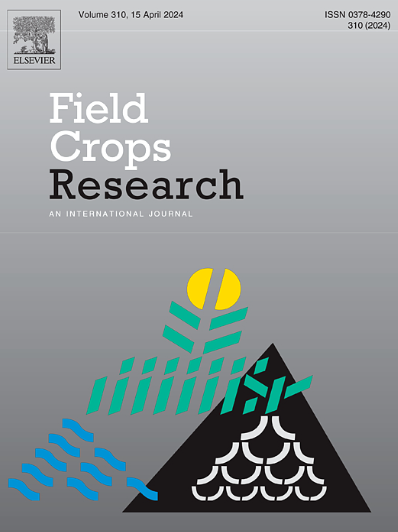Rotation, tillage and irrigation influence agronomic and environmental performance of maize-based bioenergy systems in a dynamic long-term experiment in NE Germany
IF 5.6
1区 农林科学
Q1 AGRONOMY
引用次数: 0
Abstract
Context and objectives
Cropland use for biogas production has sparked debate due to its competition with food production and potential environmental trade-offs derived from maize-based systems. Furthermore, climate change influenced cropping conditions, generating the need to adapt productive and sustainable systems. This work aimed to optimise crop production and sustainability in the face of these challenges by exploring alternatives to existing crop sequence, tillage and irrigation strategies.
Methodology
Within a long-term field experiment conducted in Müncheberg (NE Germany), specific cropping systems were assessed from 2008 to 2015, with two alternative crop sequences (continuous maize vs. 4-year crop rotation), tillage practices (plough/no-till), and irrigation (irrigated/rainfed). Productivity indicators, water and N use efficiency, and soil fertility indicators were evaluated at the cropping system level.
Results and discussion
Continuous maize systems achieved the highest energy and methane yield levels, while the diverse crop rotation achieved the highest protein yields. Irrigation showed variable yield increases (8–125 %) at rainfall levels < 400 mm pa. The tillage reduction showed a trend to lower yield but higher soil C in the later experimental years. Overall, the systems with the highest productivity also showed high levels of resource use efficiency.
Conclusions
We observed a trade-off between productivity and sustainability when diversifying continuous maize systems. Higher productivity came with evidence of soil quality decline over time. A maize and perennial legume forage-based system coupled with a target water supply for maize of 400 mm pa and the adoption of strategic tillage could maintain high productivity and sustainability in the long term.
在德国东北部进行的一项动态长期试验中,轮作、耕作和灌溉对玉米生物能源系统的农艺和环境性能有影响
背景和目的由于沼气生产与粮食生产的竞争以及玉米系统带来的潜在环境权衡,耕地用于沼气生产引发了争论。此外,气候变化影响了种植条件,产生了调整生产和可持续系统的需要。这项工作旨在通过探索现有作物序列、耕作和灌溉策略的替代方案,在面对这些挑战时优化作物生产和可持续性。方法:在德国东北部梅恩切贝格(m ncheberg)进行的一项长期田间试验中,对2008年至2015年的特定种植系统进行了评估,包括两种替代作物序列(玉米连作与4年轮作)、耕作方式(犁耕/免耕)和灌溉方式(灌溉/雨养)。在种植制度水平上评价了生产力指标、水氮利用效率和土壤肥力指标。结果与讨论连续玉米系统的能量和甲烷产量最高,而多样化作物轮作系统的蛋白质产量最高。在降雨量<; 400 mm pa时,灌溉显示产量增加(8-125 %)。减耕在试验后期表现出产量降低、土壤碳含量升高的趋势。总体而言,生产力最高的系统也显示出较高的资源利用效率。结论:我们观察到在玉米连续系统多样化时,生产力和可持续性之间存在权衡。随着时间的推移,生产力的提高伴随着土壤质量的下降。以玉米和多年生豆科牧草为基础的系统,加上玉米的目标供水量为400 mm pa,并采用策略耕作,可以长期保持高产和可持续性。
本文章由计算机程序翻译,如有差异,请以英文原文为准。
求助全文
约1分钟内获得全文
求助全文
来源期刊

Field Crops Research
农林科学-农艺学
CiteScore
9.60
自引率
12.10%
发文量
307
审稿时长
46 days
期刊介绍:
Field Crops Research is an international journal publishing scientific articles on:
√ experimental and modelling research at field, farm and landscape levels
on temperate and tropical crops and cropping systems,
with a focus on crop ecology and physiology, agronomy, and plant genetics and breeding.
 求助内容:
求助内容: 应助结果提醒方式:
应助结果提醒方式:


